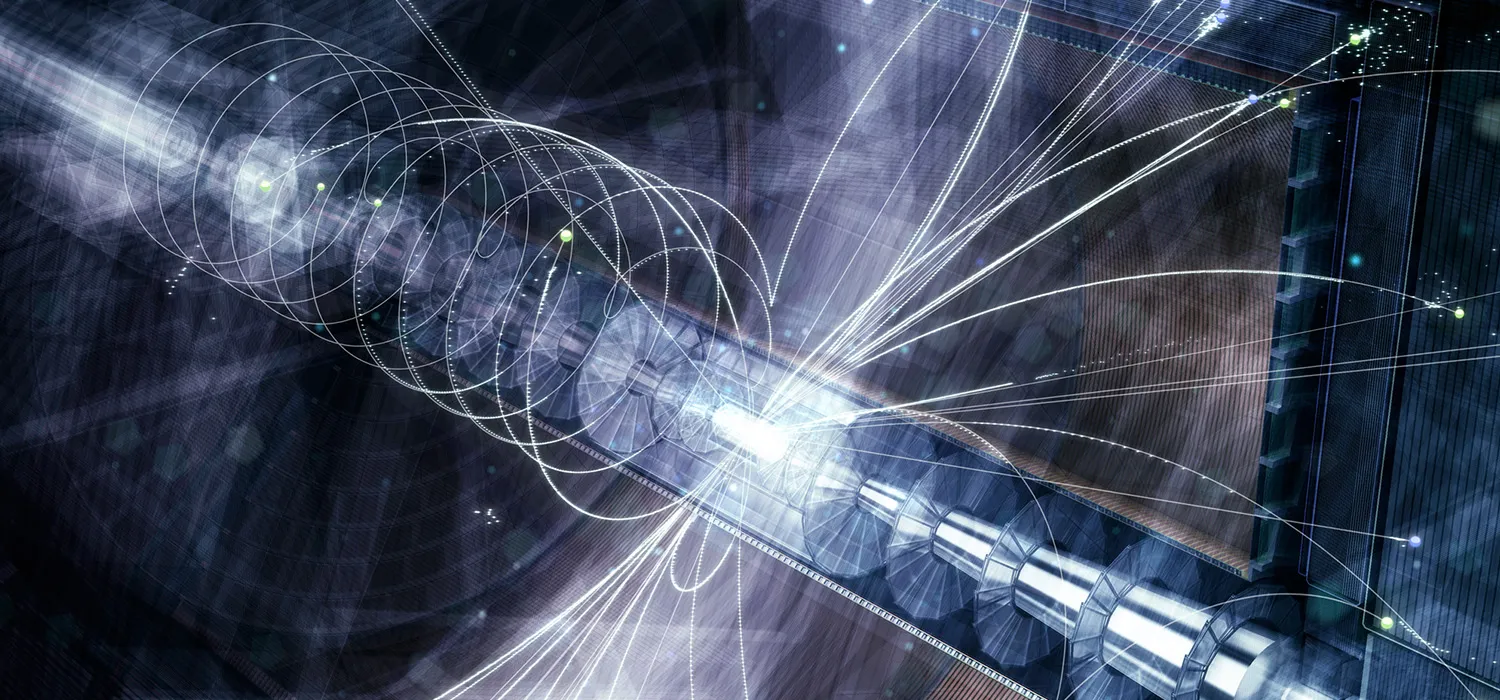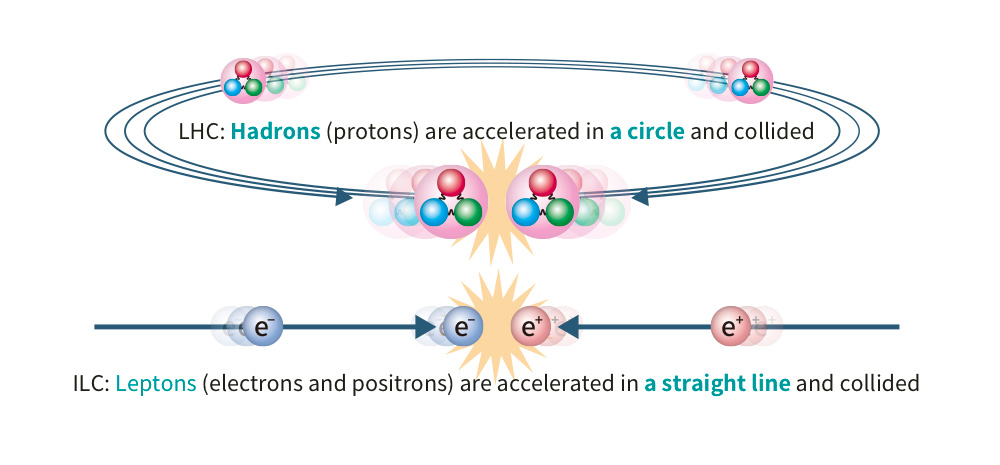ILC Project
Observing the behaviour of elementary particles at an even finer level

Overview
The International Linear Collider (ILC) will be a linear accelerator roughly 20 km long that accelerates and collides electrons and positrons (electrons and antiparticles) at the highest energy states to reproduce the state of the universe one trillionth of a second after the Big Bang and explore the mysteries of elementary particles and space. The ILC will be a next-generation core project in particle physics, and researchers around the world are currently making preparations so that it can start operating in the late 2030s.
The ILC will achieve an energy of 250 GeV for electron-positron collisions. In the future, an extension to the length of the collider and advances in accelerator technologies are expected to dramatically increase collision energy. The ILC has salient features that set it apart from the LHC.
While the LHC collides protons, which are composite particles (hadrons), the ILC will collide electrons and positrons, which are both elementary particles. Composite particles are like cherry pies, while elementary particles are like the cherries. Colliding two cherry pies causes the filling to scatter, and it is hard to determine exactly what happened during the collision. When colliding two cherries, on the other hand, the collision can be seen with great clarity. This is why the ILC is well-suited for detailed investigations of the properties of elementary particles. It holds promise for discoveries that could launch the next stage of particle physics research, such as close study of the Higgs boson, the elucidation of the origins of matter and the search for supersymmetric particles, the grand unification of forces, and the discovery of the true nature of dark matter.
The Higgs boson detected by the LHC is a particle enshrouded by the mysteries of the vacuum of space. If we wish to generate large amounts of Higgs bosons and explore them in detail, it is important that we rapidly carry out the "Higgs factory" project. The importance of this project is recognized by all of the international researcher community. The ILC, which is part of this project, is the best accelerator in terms of both performance and plan progress. The ILC will enable us to investigate the Higgs boson in detail, which we hope will shed light on the mass of elementary particles and the origin of the existence of matter. Furthermore, we have high hopes of detecting new and unknown particles which will help us verify supersymmetry theory and the grand unification of forces through efforts such as the search for lightweight dark matter.
After many years of research through international collaboration, the ILC Technical Design Report (TDR) was completed in June 2013. In 2020, ICFA created the International Development Team (IDT), and preparations are underway on the PreLab. Researchers from the University of Tokyo and ICEPP hold key positions in organisations promoting the project. ICEPP Professor Toshinori Mori serves as the Japanese representative in ICFA, while IDT has been joined by Hitoshi Murayama (Special Professor and Senior Researcher at Kavli IPMU, The University of Tokyo). Project Professor Satoru Yamashita serves as the head of the ILC Promotion Panel, which is responsible for efforts in Japan.
Research and development aimed at the realization of the project is being carried out in earnest, and progress is being made in the development of accelerators and ultra-precise detectors based on new concepts that leverage state-of-the-art technologies. Furthermore, ICEPP Associate Professor Wataru Ootani was selected as the chairperson responsible for calorimeters and is leading development work.
Japan's Kitakami mountains are a strong candidate site for the construction of the ILC. If the decision is made to construct the ILC in Japan, it will create a major international scientific city that brings together people and industries from around the world. In order to make this next-generation core project, which has drawn the attention of the world, a success, wisdom and technologies from around the world are being drawn together, and ICEPP researchers are combining their strengths.
Why are there different accelerator shapes?
Accelerators can be broadly divided into circular and linear accelerators, and into hadron and lepton accelerators. The LHC, which collides protons with each other, is a circular hadron accelerator. The ILC, which collides electrons with positrons, is a linear lepton accelerator. Hadrons are composite particles composed of multiple quarks tied together by gluons (elementary particles mediating the strong force).
Accelerators have developed from linear to circular forms, growing larger and reaching higher energies, but circular accelerators have one restriction. Electrons and positrons have a small mass, and when they curve they radiate light, losing energy. This is why large circular accelerators are primarily hadron accelerators.
However, in hadron accelerators, a variety of phenomena other than those being studied also occur at the same time, which is why they are not necessarily suited to studying the properties of elementary particles in great detail. It has long been the dream of particle physicists to achieve high collision energies at the TeV (teraelectronvolt) level with linear lepton accelerators such as the ILC.

